That lengthy title described the trip that
took place in 22 September 2004.
The trip supposed to be done onboard the driving cab. But unfortunately, due
to the driver's cheeky attitude, I cannot get onboard the cab for the entire
journey. As the replacement, I went to the tail instead. therefore making
the occasion as a tail riding experience.
The train departed from Surabaya Gubeng
at 8 am, and headed straight to Sidoarjo where I met my friend, Mr. Lutfi,
who will also act as 'tour guide' for most of the journey.
During the first stretch of journey, the
train was named as 'Penataran' train. This train was operated between Surabaya
and Blitar.
Originally we planned to go just to Blitar,
where we will took another train from the opposite direction, which will carried
us back to Surabaya (and Sidoarjo for Lutfi). But at Blitar, we were dismayed
to learn that the next train to go to Surabaya would depart at 4.20 pm. Rather
than waiting at Blitar, we decided to purchase the ticket of 'Rapih Dhoho'
train that will take us to Surabaya, through the longer route via Tulungagung,
Kediri, Kertosono, and Jombang. The train itself was actually the same train
that we use to get into Blitar. Although this time, it travel on a different
route, under a different name, and crewed by the different drivers.
In retrospect, we were quite lucky that
we decided to purchase the ticket first. He we did otherwise, we would have
to wait for several hours, and returning back to Surabaya onboard unlighted
cars at night! Although we could have spent those waiting hours by visiting
the cemetary of Sukarno (Indonesia's first president), but we simply couldn't
spared our money for that.
The remainder of our trip wasn't as good
as the previous stretch. But could see how does the area around that really
looked like.
Because the train didn't go to Sidoarjo,
Lutfi decided to debark at Surabaya-wonokromo station, so could catch a bus
to Sidoarjo. We split at there, and I continued my journey to Gubeng station,
where I finished my journey at there, and returned back home with my motorbike,
which was remarkably intact after being left for 11 hours.
For the detail of the route, you could
see it at my East Java Map.
|
|
At the start of the journey, the train
travelled along the track beside Jalan Ahmad Yani. The street is notoriously
known for its traffic jam, yet the adjacent railway line is rarely utilised
to releive the jam!
I think this is also the first time
I've ever seen a trackside babysitter service!
|
|
|
As the train arrived at Porong station,
the commuter railcar is about to depart for Surabaya.
The commuter train (known as 'Komuter'
by the local) was introduced in 2004 to reduce the traffic density between
Surabaya and Sidoarjo. But, now the service have been extended to Porong.
In an interesting footnote the railway
line between Surabaya and Porong was once a double track line. But it
was single tracked during the Japanese occupation in Second World War.
|
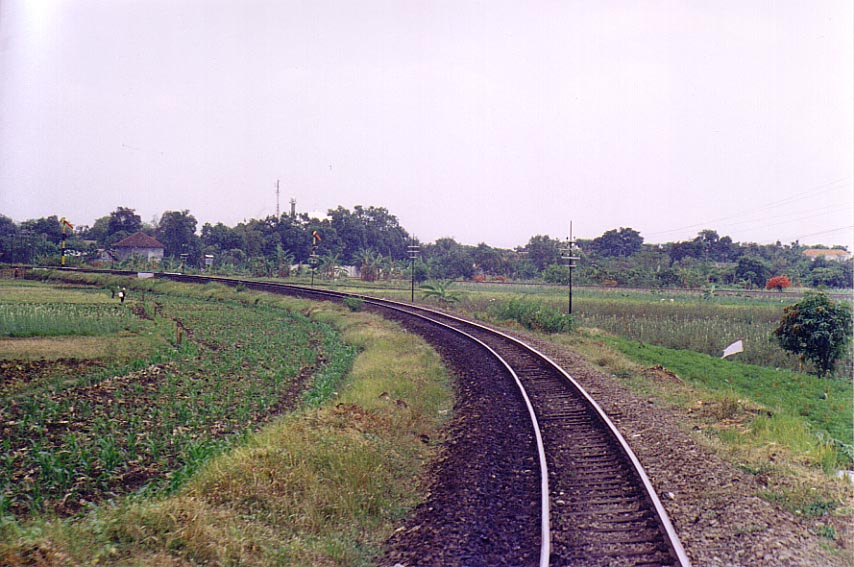 |
Bangil is known as junction city, where
the line that goes to Malang and the one to Banyuwangi separated.
For the passengers who wished to go
to Bali, they can take the train to Banyuwangi, where they will then embarked
on a ferry ride to Bali island,
where the bus service await them on Balinese side.
During the steam period, Bangil was
also used as a locomotive replacement point, where the express locomotive
from Surabaya would be replaced by F10 1-12-1 steam locomotive, to negotiate
steep grade near Malang.
|
|
|
The railway line between Bangil and
Lawang (near Malang) is known as the second steepest non-rack railway
line in Indonesia. The steepest being the one which connect Bandung and
Cianjur.
And this photo could show you how steep
it is. just pay attention to the station emplacement in the background.
|
|
|
Once we arrived at Lawang, the train
made a long stop to gave way to the descending tanker train. This
Surabaya-bound train made a small mishaps when its brakeman overreacted,
and causing the train to stop too early. But the problem was eventually
fixed.
Lawang, in English translate as 'Door'.
Because the town used to be the gateway to the kingdom of Singosari, where
the visitor from Mojopahit (a large kingdom near Surabaya) would pass
through a 'checkpoint' in this town.
Nowaday, both Lawang and Singosari
played only minor role compared to Malang ( a city to the south of both
towns).
|
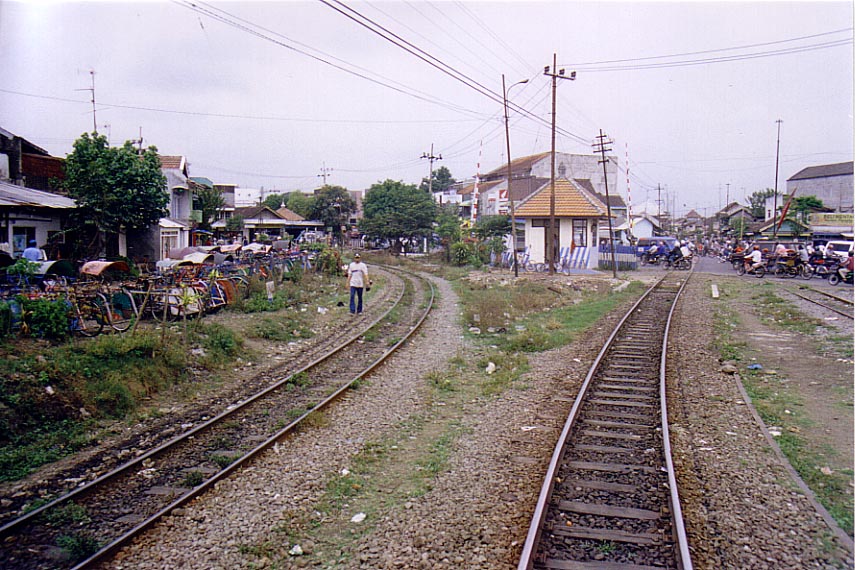 |
Just minutes after departed from Malang
railoway station, the train arrived at 'Malang Kota Lama' station where
it used to be the site of Malang's old town (kota lama=old town).
Malang Kota Lama is also a terminus
point for the tanker trains from Surabaya, where the tank cars will then
transported to the branchline on the left of the picture, and its content
will then distributed to the petrol stations around Malang by truck.
|
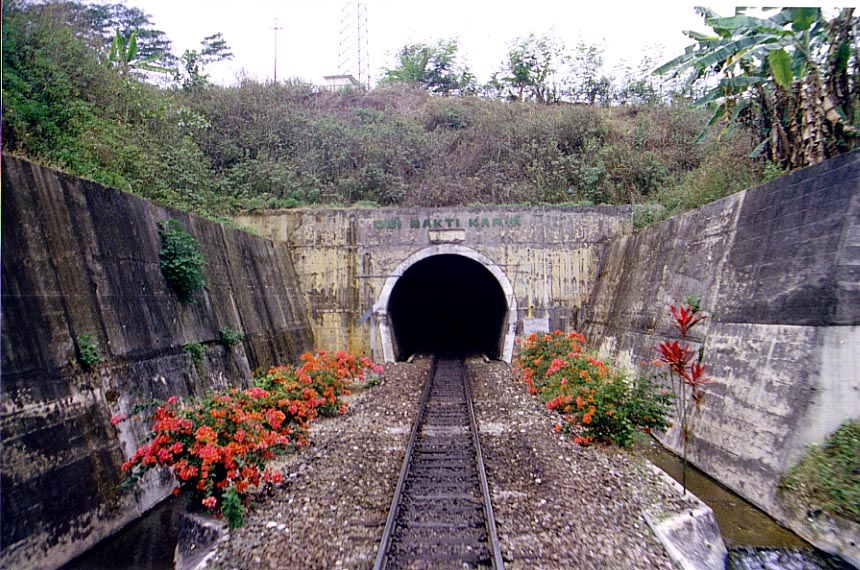 |
To the south of Malang, there are two
tunnels which was built as a part of Karangkates Dam project in 1960s.
This one is 'Dwi Bakti Karya' tunnel
which is located on the nearer side to Malang.
|
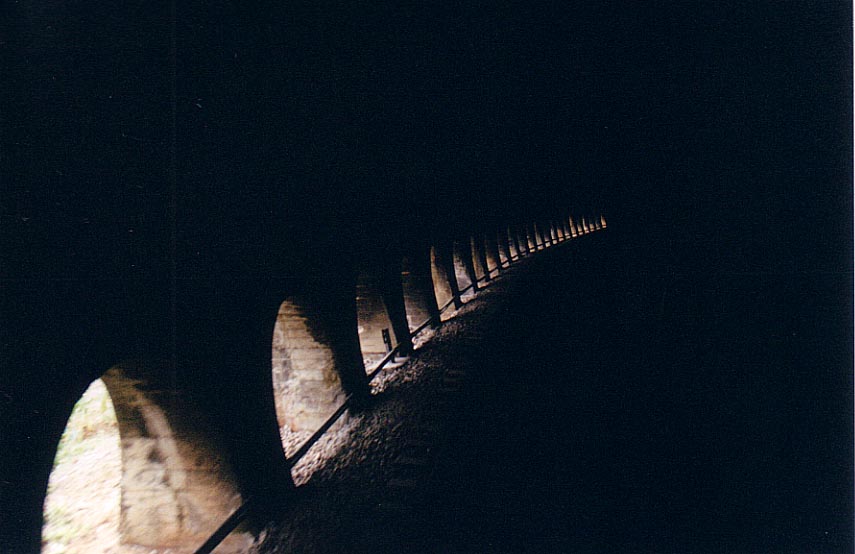 |
Normally it would have been impossible
to take the picture of tunnel interior from a moving train, without flashlight.
But in this occasion, it was
made possible due to the presence of ventilation holes (a rare feature
in Indonesia) inside 'Eka Bakti Karya' tunnel.
Commisioned in 1969, the 'Eka' and
'Dwi' tunnel are the youngest railway tunnels in Indonesia, and they were
the only railway tunnel in Indonesia which were built using tunnel boring
machine (a similar method with the one used to build Channel tunnel).
A stark contrast with those whose were built by Dutch colonial government,
which were constructed using shovels and diggers.
|
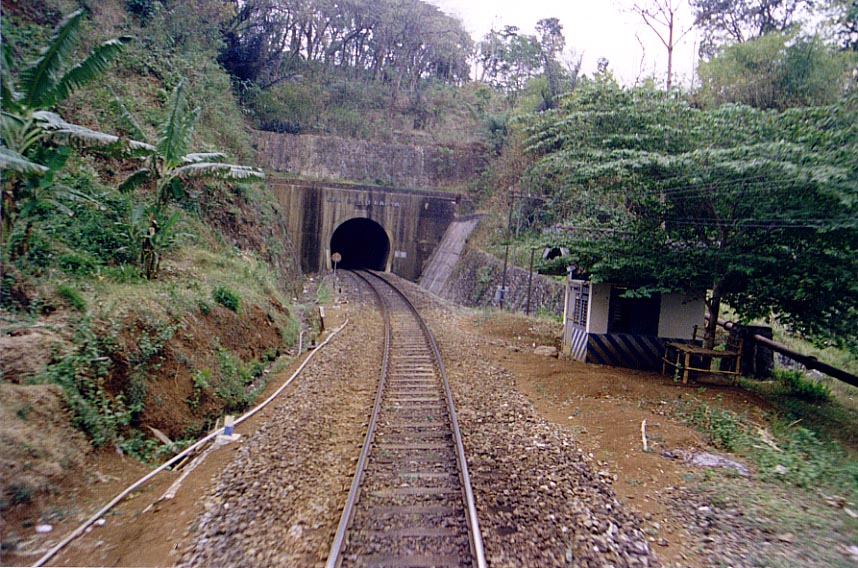 |
The view of 'Eka Bakti Karya' tunnel facade.
The tunnel, along with its sister, was built as a bypass from the old
alignment, which was sunk under the Karangkates Dam. Unfortunately, no
remmants of the old alignment are visible today.
Unlike the average railway tunnel in Indonesia, where there's only just
jungle above its roof, these tunnel have theme park and small town above
them.
|
|
|
As the train approached Kertosono,
the line rejoined with the mainline that connect Kertosono with Surabaya
through Jombang and Mojokerto.
This mainline junction is the only
operating railway junction in Indonesia that is located outside the station
emplacement.
In the past there used to be another
one in Rangkasbitung (West Java), where the line to Merak and Labuan separated.
But the line to Labuan was closed in 1980s, making this junction as the
only one of its kind, as the rest of mainline junctions in Indonesia are
located within station emplacement.
|
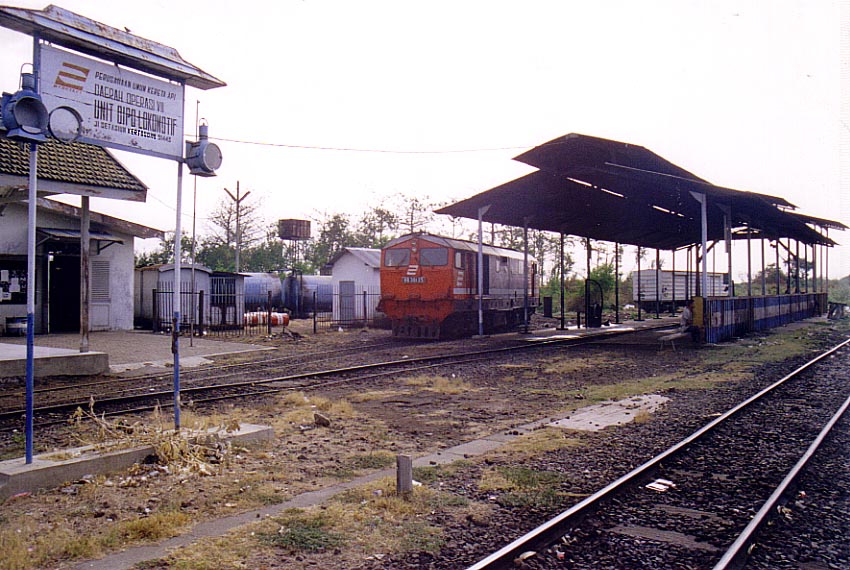 |
The Kertosono locomotive depo is just
a small shed which is used to perform minor maintenance, and used to park
visitng locomotives these days.
But in the past there used to be a
roundhouse, complete with turntable in Kertosono. Unfortunately, due to
demise of steam locomotives, the roundhouse and turntable was demolished
several years ago.
The remains of those facilites are
partially visible behind the BB30125 loco, under the trees.
|
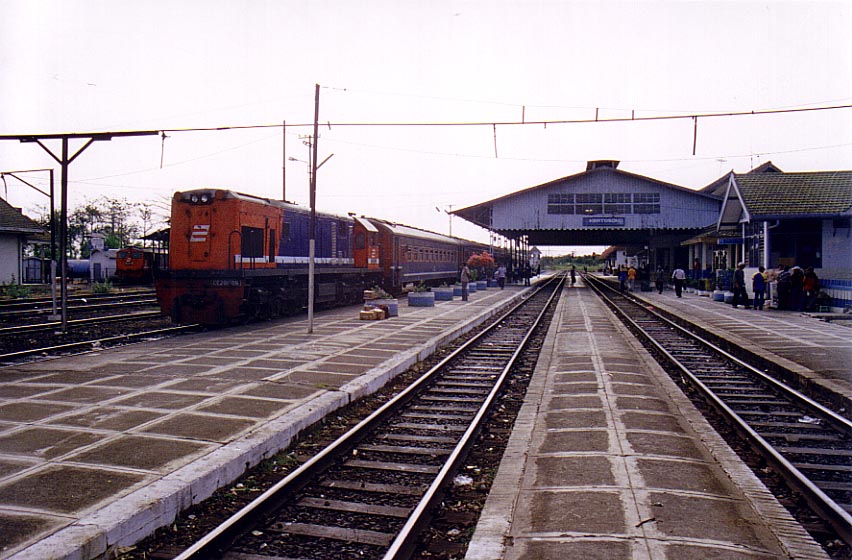 |
A view of Kertosono railway station.
My train is waiting for the approaching Bangunkarta train from Jombang
to arrive. The locomotive depo is visible in the background.
|